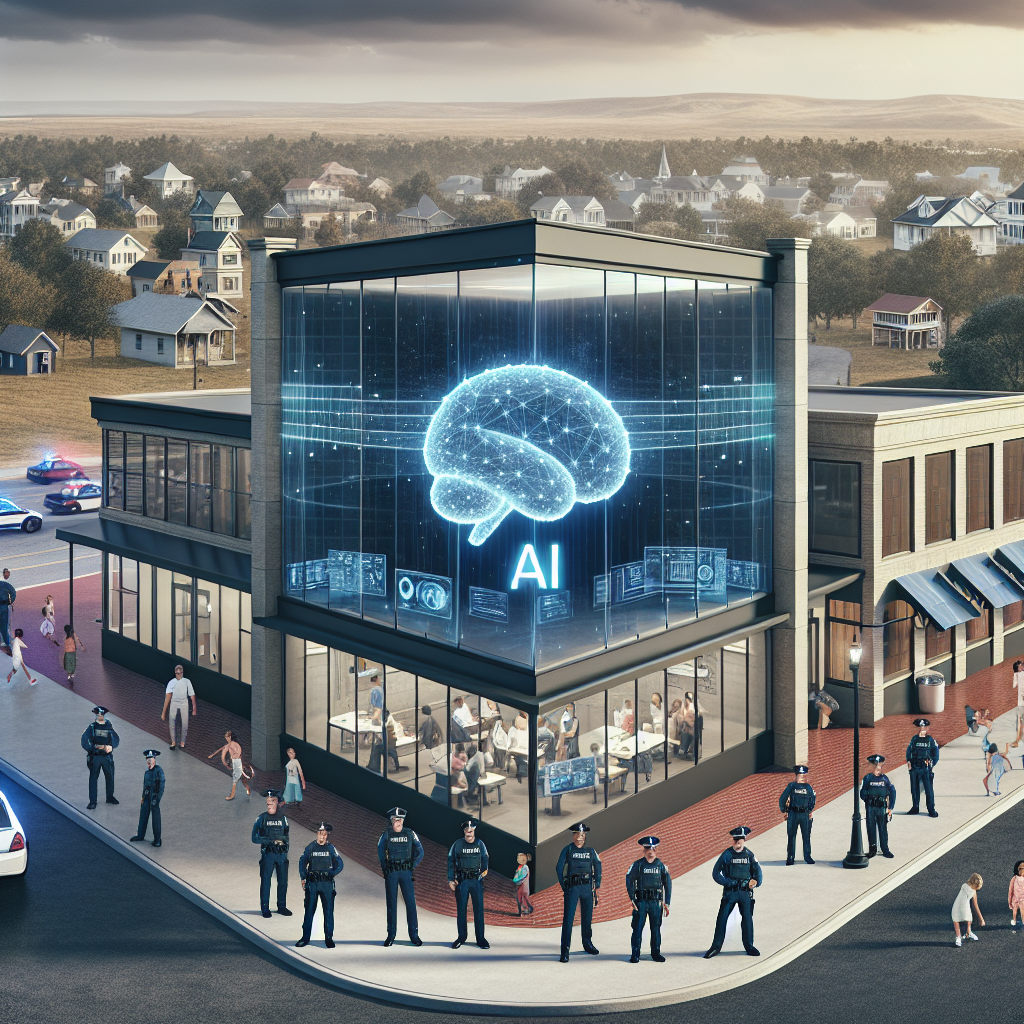Improving Public Safety with AI-Driven Solutions for Law Enforcement
In recent years, the field of law enforcement has seen a significant shift towards the use of artificial intelligence (AI) technology to enhance public safety. AI-driven solutions have the potential to revolutionize the way law enforcement agencies operate, by providing more accurate and efficient tools for crime prevention, detection, and investigation.
AI-powered tools can analyze vast amounts of data in real-time, helping law enforcement agencies to identify patterns and trends that may be missed by human analysts. These technologies can also automate routine tasks, freeing up officers to focus on more complex and strategic aspects of their work. In this article, we will explore how AI-driven solutions are being used to improve public safety and the challenges and opportunities that come with their implementation.
AI in Crime Prediction and Prevention
One of the key areas where AI is making a significant impact in law enforcement is in crime prediction and prevention. By analyzing historical crime data, AI algorithms can identify high-risk areas and predict where crimes are likely to occur in the future. This information allows law enforcement agencies to deploy resources more effectively and proactively address potential crime hotspots.
For example, the city of Chicago has been using an AI-powered predictive policing system called HunchLab to help prevent crime. The system analyzes data on past crimes, weather conditions, and other factors to generate daily crime forecasts for each police district. By using this information, the Chicago Police Department has been able to allocate resources more efficiently and reduce crime rates in targeted areas.
AI in Video Surveillance
AI-powered video surveillance systems are also playing a crucial role in enhancing public safety. These systems use advanced computer vision algorithms to analyze live video feeds and automatically detect suspicious activities or persons. This can help law enforcement agencies to respond quickly to potential threats and prevent crimes before they occur.
For example, the city of London has deployed a network of AI-powered surveillance cameras to monitor public spaces and identify criminal behavior. The cameras can detect anomalies such as abandoned bags, erratic movements, or unauthorized access to restricted areas, triggering alerts to law enforcement officers in real-time. This has helped to improve the city’s overall security and reduce the incidence of crime.
AI in Investigative Analysis
In addition to crime prediction and prevention, AI-driven solutions are also being used to enhance investigative analysis in law enforcement. These tools can help officers to sift through large volumes of digital evidence, such as text messages, emails, and social media posts, to identify relevant information and connections between suspects.
For example, the FBI has developed a tool called the National Data Exchange (N-DEx) that uses AI algorithms to search and analyze data from multiple law enforcement databases. This allows investigators to quickly access critical information on suspects, criminal networks, and past criminal activities, helping to solve cases more efficiently and effectively.
Challenges and Opportunities
While AI-driven solutions hold great promise for improving public safety, they also pose a number of challenges that need to be addressed. One of the main concerns is the potential for bias in AI algorithms, which can lead to discriminatory outcomes in law enforcement practices. For example, if a predictive policing system is trained on biased data that disproportionately targets certain minority groups, it may perpetuate existing inequalities in the criminal justice system.
To address this issue, law enforcement agencies need to ensure that AI algorithms are trained on diverse and representative datasets, and regularly audited for bias and fairness. They also need to establish clear guidelines and protocols for the use of AI technologies to prevent misuse or abuse.
Another challenge is the need for adequate training and support for law enforcement officers to effectively use AI-driven tools. Many officers may be unfamiliar with these technologies or hesitant to rely on them for critical decision-making processes. It is essential for agencies to provide comprehensive training programs and ongoing support to help officers understand the capabilities and limitations of AI solutions and integrate them into their daily workflows.
Despite these challenges, the opportunities offered by AI-driven solutions for law enforcement are vast. By harnessing the power of AI technology, law enforcement agencies can enhance their capabilities in crime prediction, prevention, and investigation, ultimately leading to safer communities and improved public trust in policing.
FAQs
Q: Are AI-driven solutions replacing human police officers?
A: No, AI-driven solutions are not meant to replace human police officers. Instead, they are designed to augment and enhance the capabilities of law enforcement agencies by providing more accurate and efficient tools for crime prevention, detection, and investigation. Human officers will still play a crucial role in making strategic decisions, exercising judgment, and interacting with the community.
Q: How can law enforcement agencies ensure the ethical use of AI in policing?
A: Law enforcement agencies can ensure the ethical use of AI in policing by implementing transparent and accountable practices, such as conducting regular audits of AI algorithms for bias and fairness, establishing clear guidelines and protocols for the use of AI technologies, and providing comprehensive training and support for officers to use these tools effectively.
Q: What are some examples of AI-driven solutions being used in law enforcement?
A: Some examples of AI-driven solutions being used in law enforcement include predictive policing systems, video surveillance systems with advanced computer vision algorithms, and investigative analysis tools that sift through large volumes of digital evidence. These technologies help agencies to identify crime hotspots, detect suspicious activities in real-time, and analyze complex data to solve cases more efficiently.
In conclusion, AI-driven solutions have the potential to transform the field of law enforcement by providing more accurate and efficient tools for crime prevention, detection, and investigation. While there are challenges that need to be addressed, the opportunities offered by AI technology for enhancing public safety are vast. By embracing these technologies responsibly and ethically, law enforcement agencies can create safer communities and improve public trust in policing.

